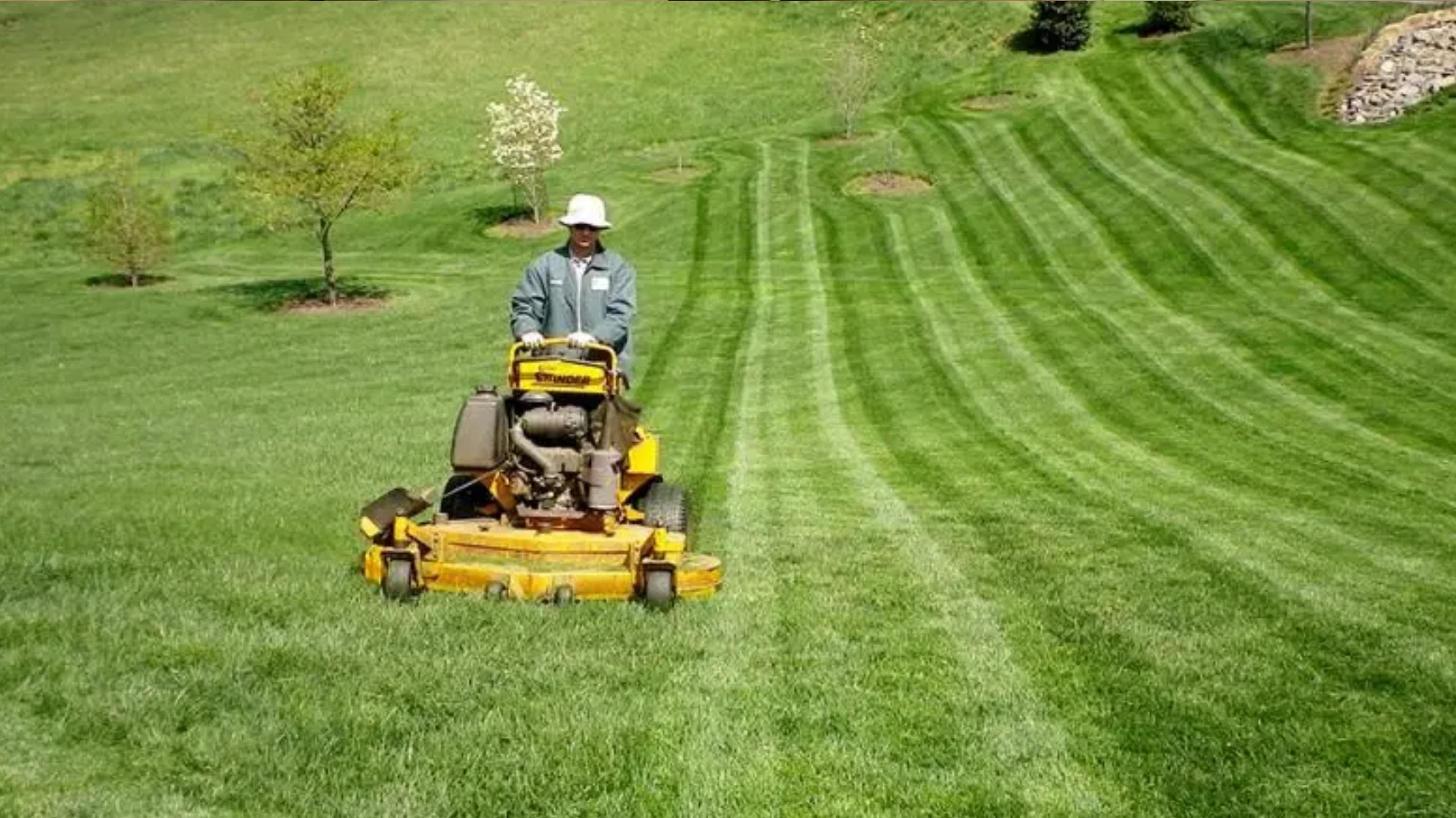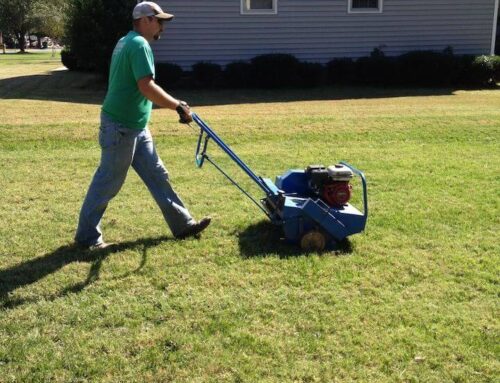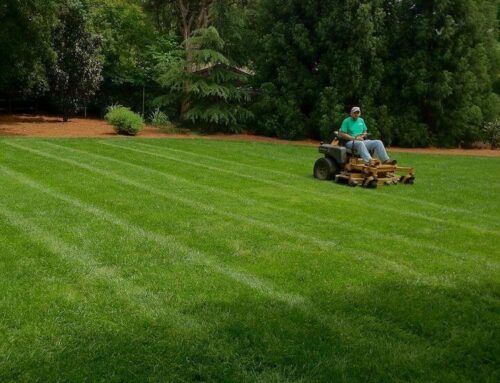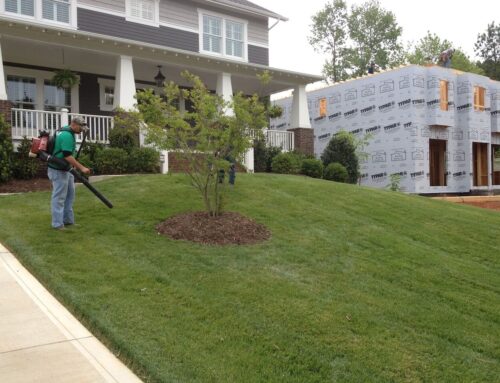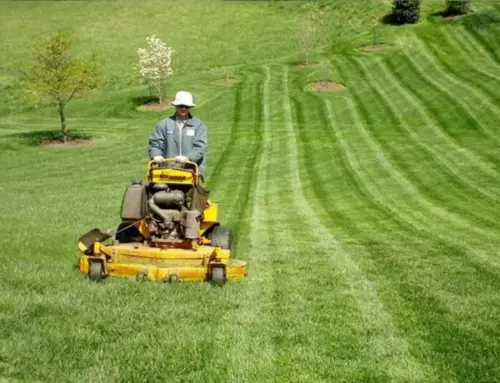A clean lawn does more than just enhance your home’s curb appeal—it plays a surprising role in combating climate change. Leaf removal, often seen as a seasonal chore, can actually contribute to effective carbon management.
When leaves pile up, they hinder the natural absorption of carbon by your lawn and can release greenhouse gases like methane if left to decompose improperly. By keeping your yard clear and healthy, you’re creating a space that supports better soil health and improved air quality.
This simple task is a small but significant step toward reducing your environmental footprint. Whether you’re maintaining your lawn at home or managing a larger property, removing leaves efficiently can make a meaningful impact. Let’s explore how keeping your lawn clear not only helps your landscape thrive but also contributes to a greener planet.
How does leaf removal contribute to carbon management?
Leaf removal is important in carbon management, helping reduce greenhouse gas emissions and promote healthier ecosystems. Here’s how it contributes:
- Prevents Excess Carbon Release: When leaves decompose on the ground, they release carbon dioxide (CO2) into the atmosphere as part of the natural breakdown process. Removing the leaves, especially from lawns, prevents this excess carbon from being emitted, thus reducing local greenhouse gas emissions.
- Promotes Carbon Sequestration in Healthy Grass: Clean lawns allow grass to grow more effectively, crucial for carbon sequestration. Healthy grass absorbs CO2 from the atmosphere and stores it in the soil. Removing leaves prevents them from blocking sunlight and restricting grass growth, helping maintain this natural carbon storage process.
- Encourages Composting and Mulching: When properly composted or mulched, leaves can be turned into valuable organic matter that traps carbon in the soil. This process helps sequester carbon, reduce the overall carbon footprint, and contribute to sustainable gardening practices.
- Supports Soil Health: Excessive leaf cover can limit soil aeration and disrupt the balance of beneficial microorganisms. By removing leaves, we help maintain soil health, which supports plants that absorb CO2, further aiding in carbon management.
When done thoughtfully, leaf removal helps reduce carbon emissions, promotes healthy growth, and supports carbon storage in the soil.
Why are clean lawns important for reducing carbon emissions?
Clean lawns are crucial for reducing carbon emissions because they help promote healthier grass growth and improve carbon sequestration. Here’s why clean lawns matter in the fight against climate change:
- Improved Grass Growth: A clean lawn allows grass to receive adequate sunlight and air, essential for photosynthesis. Healthy grass absorbs CO2 from the atmosphere and stores it in the soil, effectively acting as a natural carbon sink.
- Maximized Carbon Sequestration: When grass grows optimally, it captures more carbon and stores it in the soil through root systems. This process, known as carbon sequestration, helps offset carbon emissions and reduce the overall amount of greenhouse gases in the atmosphere.
- Prevents Decreased Photosynthesis: If fallen leaves or debris are left on the lawn, they can block sunlight and prevent grass from growing properly. This reduces the lawn’s ability to capture CO2 and hinders photosynthesis, leading to less carbon being absorbed from the air.
- Healthier Soil: Removing leaves and organic debris helps maintain healthy soil, which supports better plant growth. Healthy soil has more efficient carbon storage, ensuring carbon remains trapped in the earth instead of being released into the atmosphere.
Clean lawns are essential for reducing carbon emissions as they promote optimal plant growth, enhance carbon sequestration, and support healthier soil that traps carbon long-term.
Can regular leaf removal impact climate change efforts?
Yes, regular leaf removal can positively impact climate change efforts by reducing carbon emissions and promoting carbon sequestration. Here’s how it contributes:
- Prevents Carbon Emissions from Decomposition: Fallen leaves naturally decompose, releasing carbon dioxide (CO2) into the atmosphere. Regular removal prevents excess carbon from being emitted during decomposition, helping reduce greenhouse gas emissions.
- Supports Carbon Sequestration in Soil: Clean lawns allow for optimal grass growth, vital in absorbing CO2 from the atmosphere. Healthy grass stores carbon in the soil through its roots. Removing leaves allows grass to grow freely, maximizing its carbon-capturing potential.
- Encourages Composting and Mulching: When removed, leaves can be composted or mulched, an environmentally friendly way to capture carbon. These practices help convert organic matter into valuable soil amendments that trap carbon rather than letting it return to the atmosphere.
- Improves Soil Health: Regular leaf removal maintains soil health by preventing the buildup of excess organic material. Well-aerated soil supports better plant growth, which increases the amount of CO2 absorbed from the atmosphere, further aiding in carbon management.
Regular leaf removal contributes to climate change by preventing carbon release, supporting healthier lawns and soil, and promoting sustainable practices like composting.
What role does lawn maintenance play in sustainable carbon practices?
Lawn maintenance plays a significant role in sustainable carbon practices by promoting healthy soil, improving carbon sequestration, and reducing greenhouse gas emissions. Here’s how proper lawn care contributes to sustainability:
- Enhances Carbon Sequestration: When properly maintained, healthy lawns act as carbon sinks by absorbing CO2 from the atmosphere and storing it in the soil through plant roots. Regular lawn care practices, such as mowing, aerating, and watering, promote grass growth, which increases the lawn’s capacity to capture and store carbon.
- Reduces Carbon Emissions: Proper lawn maintenance reduces the need for excessive use of chemicals, fertilizers, and pesticides, which can contribute to carbon emissions and soil degradation. By using organic practices, homeowners can lower their environmental impact.
- Prevents Excessive Decomposition: When decomposing, leaves and organic debris can release carbon back into the atmosphere. Regularly removing these materials prevents excessive carbon release and helps maintain a clean, healthy lawn that can continue absorbing CO2.
- Improves Soil Health: Aerating the soil and maintaining a healthy lawn encourages microorganisms that help break down organic matter, promoting better soil health. Healthy soil is more efficient at storing carbon, which plays a key role in reducing overall carbon emissions.
- Encourages Sustainable Practices: Regular lawn care promotes eco-friendly practices, such as composting and mulching, which help trap carbon and reduce waste. These sustainable practices support long-term carbon management.
Lawn maintenance supports sustainable carbon practices by fostering healthy grass growth, improving soil health, and minimizing harmful carbon emissions, making it a key component of eco-friendly landscaping.
Partner with Us for Leaf Removal That Makes a Difference!
At Performance Lawn & Landscape, we believe small actions can lead to big environmental benefits. Regular leaf removal doesn’t just keep your yard looking neat—it’s a simple way to support carbon management and contribute to a healthier planet. By clearing away decomposing leaves, you help reduce excess carbon emissions while promoting lush, green grass that naturally absorbs and stores CO2.
Our expert team is here to make it easy for you. With efficient leaf removal services, we ensure your yard not only stands out for its beauty but also plays a role in reducing greenhouse gases. Together, let’s take a step toward sustainability. Reach out to Performance Lawn & Landscape today and discover how a clean lawn can be part of a greener future!

